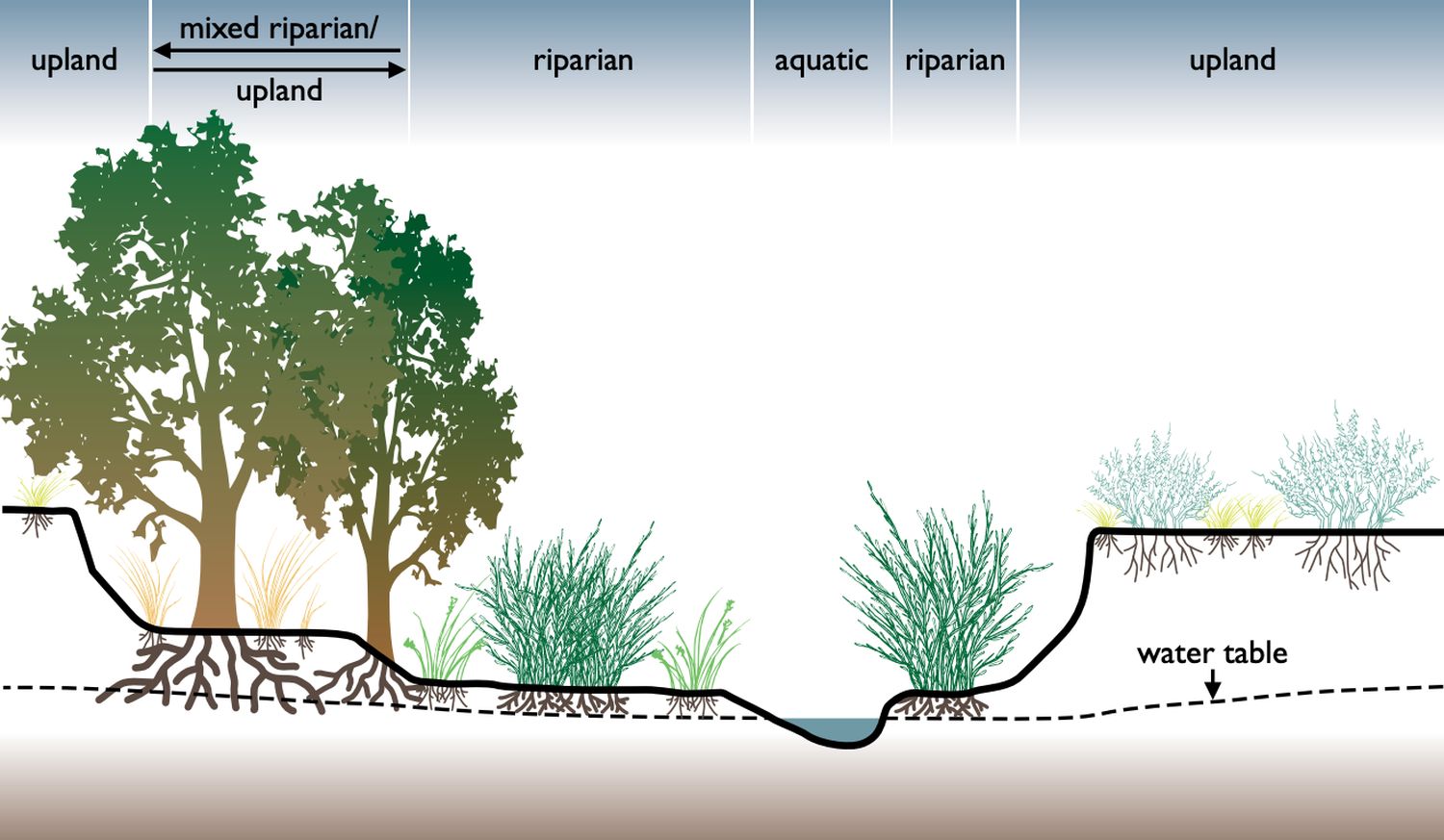
Riparian zones are fascinating areas where land meets water, creating unique ecosystems teeming with life. These regions are crucial for maintaining biodiversity, water quality, and soil stability. Ever wondered why these areas are so vital? Riparian zones act as natural filters, trapping pollutants before they reach water bodies. They also provide habitat for a variety of wildlife, from fish to birds to insects. Additionally, these zones help prevent erosion by stabilizing soil with their dense root systems. Whether you're a nature enthusiast or just curious about the environment, understanding riparian zones can offer valuable insights into how nature works to sustain itself.
What is a Riparian Zone?
Riparian zones are the lush, green areas found along the banks of rivers, streams, and other bodies of water. These zones are vital for maintaining healthy ecosystems and supporting diverse wildlife. Here are some fascinating facts about riparian zones.
-
Riparian zones act as natural buffers, filtering pollutants from runoff before they reach water bodies.
-
These areas help stabilize stream banks, reducing erosion and sedimentation in waterways.
-
Riparian zones provide critical habitat for a wide variety of plant and animal species.
-
They play a key role in maintaining water quality by trapping sediments and absorbing nutrients.
-
Riparian vegetation can help moderate water temperatures, benefiting aquatic life.
Importance of Riparian Zones for Wildlife
Riparian zones are essential for wildlife, offering food, shelter, and breeding grounds. Let's explore some interesting facts about how these areas support different species.
-
Many bird species rely on riparian zones for nesting and feeding.
-
Amphibians, such as frogs and salamanders, thrive in the moist environments of riparian zones.
-
Mammals like beavers and otters depend on riparian habitats for their survival.
-
Fish species benefit from the shade and cooler water temperatures provided by riparian vegetation.
-
Insects, including dragonflies and butterflies, are abundant in riparian zones, supporting a diverse food web.
Riparian Zones and Plant Diversity
The plant life in riparian zones is incredibly diverse, contributing to the overall health of the ecosystem. Here are some facts about the unique vegetation found in these areas.
-
Riparian zones often host a mix of trees, shrubs, and grasses, creating a multi-layered canopy.
-
Many riparian plants have deep root systems that help stabilize soil and prevent erosion.
-
Some plant species found in riparian zones are specially adapted to tolerate flooding and waterlogged soils.
-
Riparian vegetation can include both native and non-native species, with native plants often providing greater ecological benefits.
-
The diverse plant life in riparian zones supports a wide range of pollinators, including bees and hummingbirds.
Human Impact on Riparian Zones
Human activities can significantly impact riparian zones, sometimes leading to degradation and loss of these vital areas. Here are some facts about how human actions affect riparian zones.
-
Urban development and agriculture can lead to the destruction of riparian habitats.
-
Pollution from industrial and agricultural sources can degrade water quality in riparian zones.
-
Dams and water diversions can alter the natural flow of rivers, impacting riparian ecosystems.
-
Invasive species introduced by human activities can outcompete native plants and animals in riparian zones.
-
Restoration efforts, such as replanting native vegetation and removing invasive species, can help rehabilitate degraded riparian zones.
Benefits of Riparian Zone Restoration
Restoring riparian zones can provide numerous ecological and economic benefits. Here are some facts about the positive impacts of riparian zone restoration.
-
Restored riparian zones can improve water quality by filtering pollutants and reducing sedimentation.
-
Restoration projects can enhance habitat for wildlife, increasing biodiversity.
-
Healthy riparian zones can provide recreational opportunities, such as fishing and birdwatching.
-
Restored riparian areas can help mitigate the impacts of climate change by sequestering carbon and reducing flood risks.
-
Economic benefits of riparian restoration include increased property values and reduced costs for water treatment.
Interesting Facts About Riparian Zones Around the World
Riparian zones can be found in various climates and regions, each with unique characteristics. Here are some interesting facts about riparian zones from different parts of the world.
-
The Amazon River Basin contains some of the most extensive and diverse riparian zones on the planet.
-
Riparian zones in arid regions, such as the southwestern United States, are critical for providing water and habitat in otherwise dry landscapes.
-
In temperate regions, riparian zones often support lush forests with a mix of deciduous and evergreen trees.
-
Riparian zones in tropical regions can be incredibly biodiverse, supporting a wide range of plant and animal species.
Final Thoughts on Riparian Zones
Riparian zones are more than just pretty landscapes. They play a crucial role in maintaining healthy ecosystems. These areas help control erosion, filter pollutants, and provide habitat for wildlife. They also act as natural buffers, protecting water bodies from excessive nutrient runoff. Without them, our rivers and streams would be in trouble.
Understanding the importance of riparian zones can lead to better conservation efforts. By preserving these areas, we ensure cleaner water, healthier wildlife, and more resilient ecosystems. Next time you see a lush, green area by a river or stream, remember it's doing a lot more than just looking nice. It's working hard to keep the environment balanced and thriving. So, let's appreciate and protect these vital zones for the benefit of all living things.
Was this page helpful?
Our commitment to delivering trustworthy and engaging content is at the heart of what we do. Each fact on our site is contributed by real users like you, bringing a wealth of diverse insights and information. To ensure the highest standards of accuracy and reliability, our dedicated editors meticulously review each submission. This process guarantees that the facts we share are not only fascinating but also credible. Trust in our commitment to quality and authenticity as you explore and learn with us.
